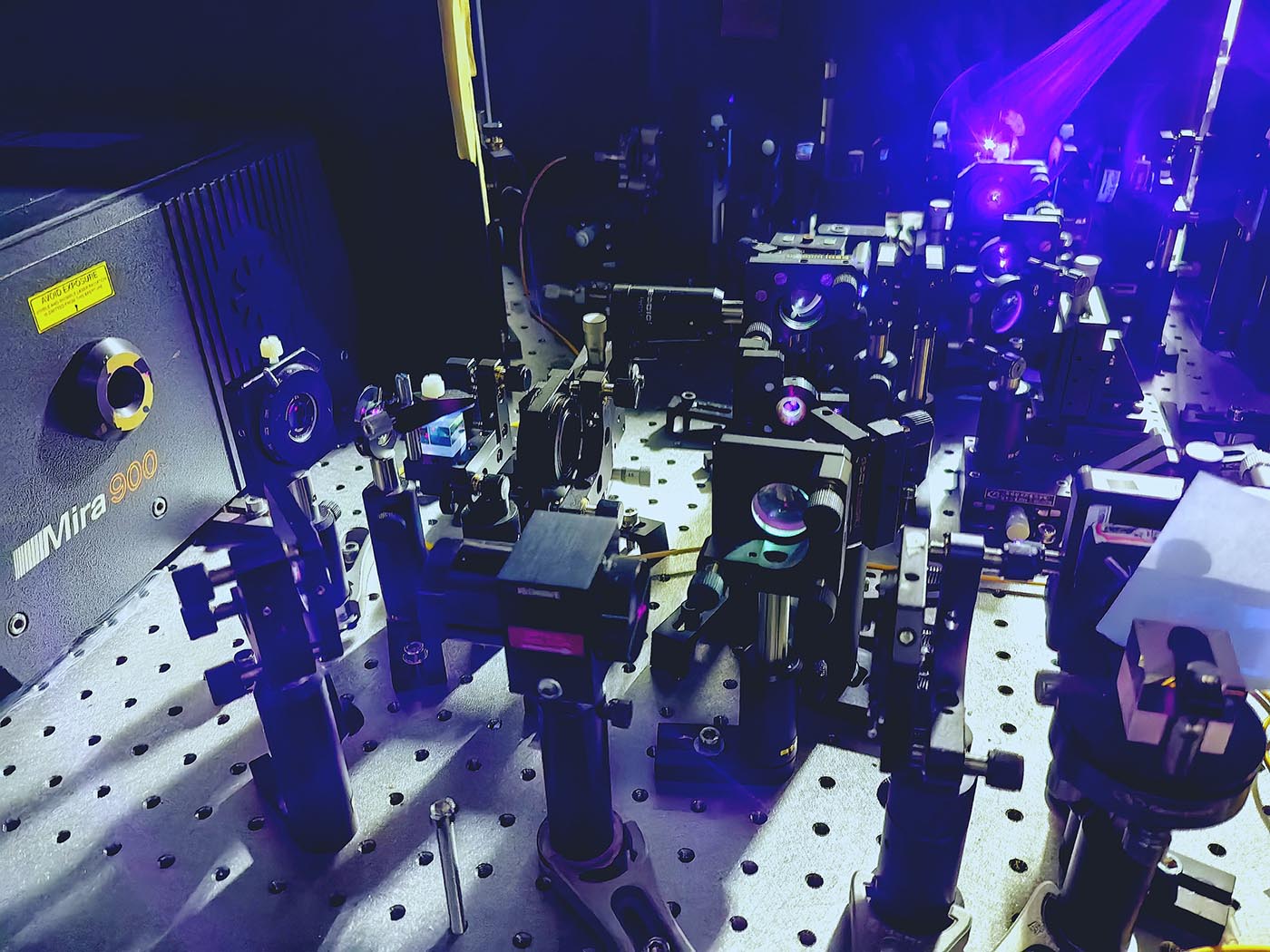Highlights
Qubits show advantage for modelling complex systems
 The simulation work was a collaboration by theorists in Singapore and the UK and experimentalists at the University of Science and Technology of China using the setup pictured.
The simulation work was a collaboration by theorists in Singapore and the UK and experimentalists at the University of Science and Technology of China using the setup pictured.
A single qubit can simulate a complex process better than a single classical bit, an international team including CQT’s Mile Gu and Chengran Yang has shown. The result points to the potential of quantum computers for complex systems modelling.
The team describe their research in the paper “Implementing quantum dimensionality reduction for non-Markovian stochastic simulation” published in Nature Communications on 6 May.
Complex systems such as traffic patterns, weather forecasts, and financial markets are ‘stochastic’ processes typically modelled by storing vast amounts of information about events in the past – which quickly consumes lots of memory.
In their new work, the team identify a family of complex processes that can be simulated with only a single qubit of memory – the basic unit of quantum information – however much past information is tracked. What’s more, they implemented the model on a photonic quantum computer using a single photon as a qubit.
The work was a collaboration by Mile, who is a CQT Fellow and Associate Professor at the Nanyang Technological University, Singapore, and Chengran, a CQT Research Fellow, with collaborators at The University of Manchester and the University of Science and Technology of China (USTC). The experiment was performed at USTC.
Thomas Elliott, project leader at The University of Manchester, said: “Many proposals for quantum advantage focus on using quantum computers to calculate things faster. We take a complementary approach and instead look at how quantum computers can help us reduce the size of the memory we require for our calculations. One of the benefits of this approach is that by using as few qubits as possible for the memory, we get closer to what is practical with near-future quantum technologies.”
The team showed that the quantum simulator could achieve higher accuracy than is possible with any classical simulator equipped with the same amount of memory. The approach might be adapted to simulate other complex processes with different behaviours.
“Saving memory is not just about saving physical resources, it's also about having a better understanding of underlying causal relations. The more things a model tracks, the harder it is to train, as there are more parameters to optimise. In contrast, models with fewer parameters tend to generalise better and require less training data. Our quantum models may thus also provide further advantages in terms of the capacity to learn in data-sparse regimes,” said Mile.
Chengran added “This is the first realisation of a quantum stochastic simulator where the propagation of information through the memory over time is conclusively demonstrated, together with proof of greater accuracy than possible with any classical simulator of the same memory size.”
A photonic quantum computer was ideal for this demonstration because operations on photons can be performed very precisely. Wu Kang-Da, post-doctoral researcher at USTC and joint first author of the research, said: “Quantum photonics represents one of the least error-prone architectures that has been proposed for quantum computing, particularly at smaller scales.”
Mile, Chengran and other collaborators are also exploring the potential of dimensional reduction in other systems. For example, in experiments on IBM’s superconducting quantum computers over the cloud, the researchers have looked at how much better quantum simulations can be than classical simulations when they track a fixed number of features. That work is described in a preprint
A challenge in extending this work to simulations of real-world data is that the quantum computer needs to be big enough to match the 'output alphabet' of the calculation. A single qubit can give binary, yes or no, on or off, answers. However, a financial model may need to give a 32-bit floating point number as an output, for example, which would require 32 well-controlled qubits. Minimising the amount of memory required for a simulation is still a bonus that brings this prospect closer.
This article is adapted from a press release issued by The University of Manchester.
Learn more
Related Stories
Want more efficient simulators? Store time in a quantum superposition March 02 2018 | |
 | Quantum simulation explores all possible futures April 12 2019 |






